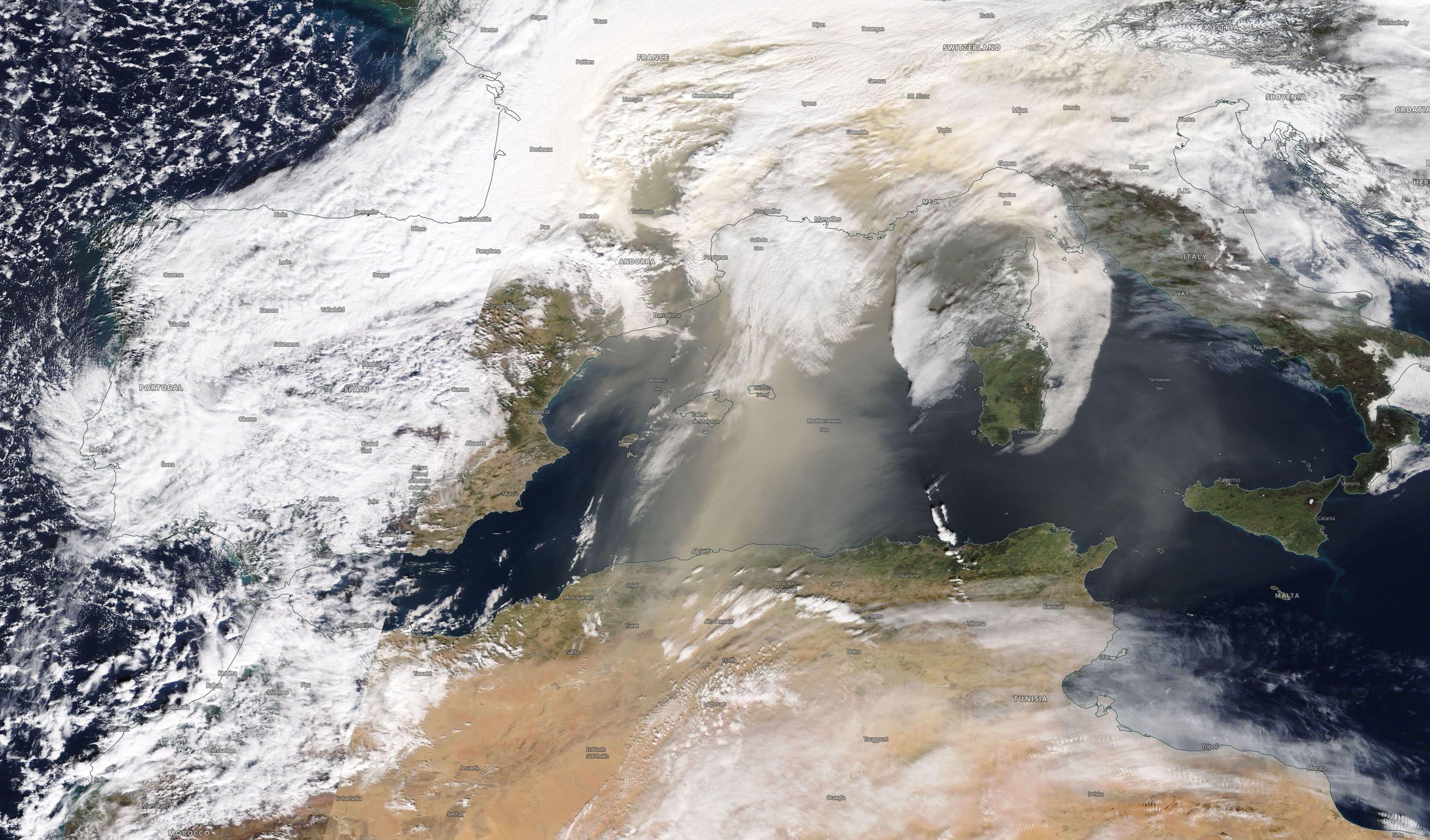Sahara dust turns European snow brown
A cloud of dust from the Sahara Desert was blown over Europe late last week, turning skies and ski slopes brown in a number of countries.
It's not uncommon for bursts of strong southerly winds to carry dust from Africa's vast Sahara Desert across the Mediterranean Sea during winter.
However last week, a particularly thick cloud of dust turned the typically pristine white ski slopes of Andorra brown.

Image: NASA's Terra satellite captured a large cloud of dust from the Sahara Desert being blown over the Mediterranean Sea towards Europe on Saturday. Source: NASA Worldview
Images of the dust-covered Pyrenees flooded social media on Saturday as skiers cut white tracks through the brown snow.
One video showed a person scraping the thin layer of dust away with a car key to reveal the white snowpack that lay beneath.
A Grandvalira #sablesaharien #pols #andorra 📷 @montpackers pic.twitter.com/cqa763zlWk
— Météo Pyrénées (@Meteo_Pyrenees) February 6, 2021
Strong southern winds mean Toulouse is having a bit of a #SepiaDay, as sand from Sahara Desert is blown away across the Mediterranean Sea pic.twitter.com/TS1zlbBS7r
— Baptiste Gombert 🇪🇺 (@BaptisteGomb) February 6, 2021
Dust can be problematic for snow in a number of ways. The most obvious is the impact it has on the aesthetic of the slopes. Brown snow can turn people off skiing and snowboarding, which can have financial consequences for the snowsports industry.
Dust also affects the albedo of snow. The albedo is a measure of how reflective a surface is. Snow has a high albedo, meaning it reflects a high proportion of the incoming solar radiation. However dust-covered snow has a lower albedo and absorbs more of the sun's energy. Studies have found that dirty snow can melt faster than clean white snow.
While the Sahara Desert is one of our planet's most well-known sources of intercontinental dust storms, Australia has also been known to turn snow brown in other countries.
— Fabulousmonster (@Rachelhatesit) January 2, 2020
Dust storms during Australia's Black Summer caused snow and glaciers in New Zealand to turn brown. At times, this dust was also accompanied by bushfire smoke, making for eerie scenes across the Tasman Sea.